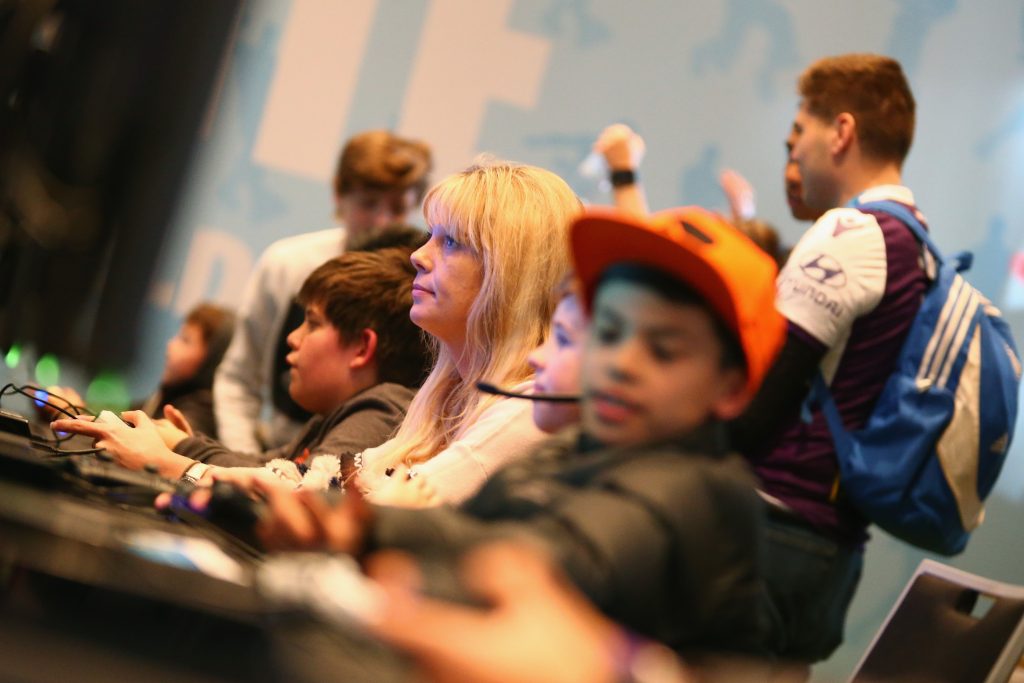Authors : Varun Verma & Anish Lathker
So your child wants to play esports. Whether it be competitive or casual, it’s completely normal. According to Gaimin, an industry-leading gaming platform, there are approximately 2.2 billion gamers around the world, almost 30% of the entire world’s population. Behind the casual side lies the competitive one. The billion dollar competitive esports scene involves international fame, money, and a sense of community to the gamers at the top of the industry. This guide will not only explain all you need to know as a parent about the world of esports and its capabilities, but also how to support your child through their journey, wherever it may lead.
This particular guide was created by the staff at CERD with the support of various collegiate esports coaches and directors.
📍Esports Overview
Esports, or electronic esports, refers to the act of playing games online. Whether it be competitively or casually, millions of players hop on to one of several platforms every day to play one of hundreds of titles. At the top of the millions lie the professional players, those who compete usually for a team or organization in front of millions of players in one of many tournaments.
Streaming is a large part of esports and the esports scene. Streaming involves players live-streaming content (mostly gameplay) to the world on platforms like Twitch, and Youtube Live. Players often tune in to watch players either because they are good at what they are doing or if they are very entertaining. Twitch, the largest of streaming platforms, reported to have more than 15 million daily watchers, a large part of that towards esports and gaming. On your child’s journey to the competitive scene, streaming may be utilized to not only earn money, but gain communication skills necessary for the esports scene. Streaming may also land you into an amateur or professional team, allowing you to gain connections and partnerships for the future.
📍Collegiate Esports
College esports involves playing esports in college either as a club or varsity sport. As of now, there are currently over 170 varsity esports programs part of the National Association of Collegiate Esports (NACE), the governing body of collegiate esports. This number does not include the thousands of colleges with club programs, Tespa chapter, CSL teams, and more competing daily in several titles. Some programs have even began offering scholarships to eligible players in esports allowing them comfortably earn a degree while pursuing esports on the side as a sport. Collegiate esports tends to also help students go professional in games due to the teamwork and skills they experience during their time in college. The best part is, even if their esports career does not work out or is in a standstill, they still have a degree to fall back on. If your child is either not the best at the game she/he is attempting to go professional in or is not really sure what she/he wants to do in the future, going to the college of his/her choice and pursuing esports on the side may be the best option.
📍Scholarships
In the collegiate esports scene, scholarships are available to the most qualified players in select programs. They depend greatly on the school, their status within the esports scene, and the development of their esports teams. Esports scholarships are considered athletic scholarships by most schools. The NACE reports that their schools offer an average of $4,800 a year in scholarships. Academics help greatly in this effort. Although some colleges do not, most have requirements regarding GPA, SAT, and ACT scores to be eligible for athletic scholarships. If your child performs well in school, this also increases his/her chances of earning additional scholarships, reducing the out-of-pocket and/or loan amounts needed to earn a degree.
📍International Fame
The end goal of all aspiring professionals, the idea that everyone around the world will know and appreciate you and all that you stand for. Although available primarily to those at the top in streaming or competitive gaming, with hard work, a direction, purpose, and your support in their dreams, your child has the chance to get there.
📍A Great Community
Esports, unlike many of the industries around the world, is unique in that it has one of the strongest, largest communities in the world. Especially once in a collegiate or professional team, you have the constant backing of your teammates, organization, or streaming community. Even for an amateur or striving gamer, the use of communities to maintain mental health and happiness cannot be emphasized enough.
📍Money
Like any sport, the best of the best get paid lucratively in esports. With a net worth of up to over 6 million United States Dollars, esports players live in luxury, especially considering that their temporary housing and food is often paid for by the organization. The numbers are not including sponsorships and streams either. Leading Twitch streamer Ninja, in an article by CNN, made over 10 million United States Dollars in 2018 alone from only his stream.

📍How to Support your Child
Equipment–
Equipment is an obvious necessity in esports. Every millisecond can determine whether the game ends in a win or loss. Every game has its own requirements and platform.
Consciousness–
One of the best things you can do for your child is to remain conscious and aware. Like everyone, it can be easy to get distracted from the goal at hand. So whether it be raging at the game or simply slacking off too much, everyone needs a nudge in the right direction. Physical health is just as important. It is no surprise that sitting in front of a screen for several hours in a row has adverse health effects on the eyes. Major organizations have caps to prevent their players from ruining their bodies, but there are no such caps in the amateur and home gaming community because of the grind and attempt to be the best of the best. That being said, it’s good to encourage your child to maintain a good balance between the two. Encourage them to go outside and have breaks from gaming from time to time.
Emotional Support–
Just some support and help to get your child going on a tough day can make a world’s difference when it comes to their gameplay and how they perform. Gamers want to know that their parents support them through their journey, and doing so allows them to fully focus and do what they do best.
Guides and Platforms–
The use of guides and platforms in your child’s esports journey cannot be overemphasized. Learning from industry leaders and real coaches is the best way for you and your child to be fully aware of what is next to come.
📍Final Thoughts
Esports, as one of the largest growing industries and platforms our world has ever seen, is well worth it for your child. It not only teaches your child essential communication and teamwork skills to be used throughout life, but may also land your child a scholarship and give them a chance at global recognition. We hope you took away the impact of esports and what you can do to help make your child’s dream a reality.
Next Post
In our next post we’ll introduce you to our partners at CERD and put them through a Q&A session about collegiate esports and the future of the industry.
About ACA
ACA is an Asian-based sports and esports consultancy that guides student athletes and their families through the complexities of the US college recruiting process. We help promote students to all colleges in the U.S. that have esports teams. We assist families and their esports athletes through every step of the process from putting together a profile and academic history all the way through to college application and visa requirements.


